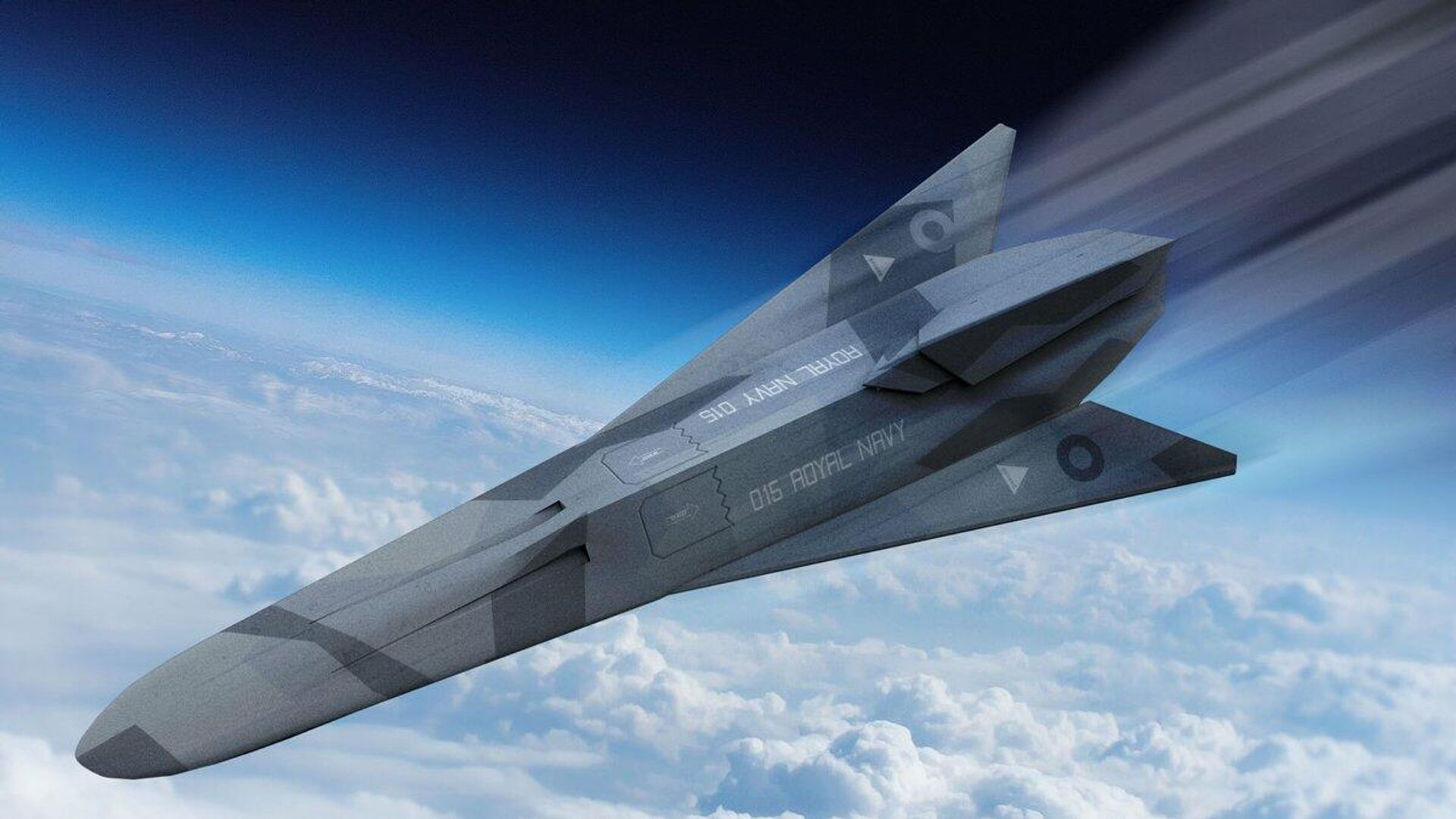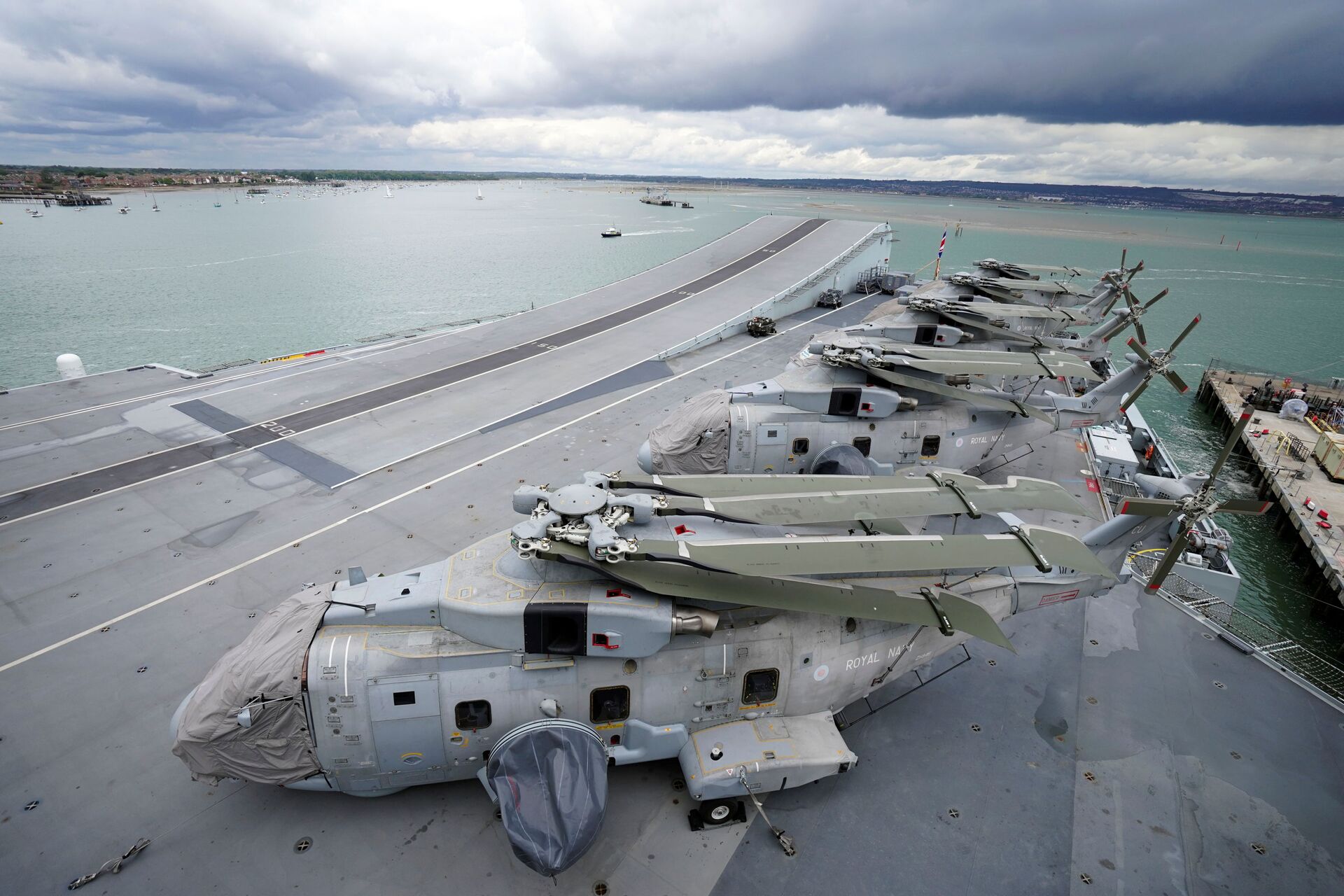https://sputnikglobe.com/20210913/from-stratospheric-drones-to-an-underwater-flagship-uk-navy-unveils-futuristic-autonomous-fleet-1089022629.html
From Stratospheric Drones to an Underwater Flagship: UK Navy Unveils Futuristic Autonomous Fleet
From Stratospheric Drones to an Underwater Flagship: UK Navy Unveils Futuristic Autonomous Fleet
Sputnik International
Young engineers had been challenged by the UK Naval Engineering Science and Technology (UKNEST) forum to offer their futuristic designs and proposals to meet... 13.09.2021, Sputnik International
2021-09-13T07:14+0000
2021-09-13T07:14+0000
2021-09-13T07:14+0000
military & intelligence
drones
great britain
british royal navy
boris johnson
https://cdn1.img.sputnikglobe.com/img/07e5/09/0d/1089023496_0:0:1200:675_1920x0_80_0_0_60bb504b1dc7d8ac224343073af4fceb.jpg
The Royal Navy is set to offer a glimpse at how it might further embrace autonomous technology at the upcoming Defence and Security Equipment International (DSEI) exhibition, set for 14-17 September in London.Ahead of the land, sea and air biennial defence and security exhibition, young engineers from industry and academia responded to a design challenge from UK Naval Engineering Science and Technology (UKNEST). "In a future scenario if we find ourselves unable to compete traditionally in terms of mass, we must think differently if we are to regain operational advantage," said Second Sea Lord, Vice Admiral Nick Hine, adding:UKNEST Challenge One of the concepts suggested creating a flying drone station, with a huge helium balloon attached to it, located in the upper stratosphere and covered in material able to collect solar energy for power. This would potentially offer a base station for fast strike vehicles able to drop in free fall before their wings expanded, striking a target using projectiles launched from rail guns skimming across the surface of the water. The engineers also proposed a design for a semi-submersible carrier stealth vessel powered by biofuel and wind power, capable of housing autonomous submarines.This feeds into the general direction that current maritime warfare is heading towards, believe experts who weighed in in the designs. Future warfare at sea might presuppose “substitution of the few and the expensive for a combination of exquisite platforms, but also relatively cheap, unmanned, or optionally-manned platforms", Dr Sidharth Kaushal, a research fellow at Royal United Services Institute (RUSI), was cited as saying by Sky News. He added that some of the proposals by the engineers are "eminently rational", while others were "much more in the realm of very, very speculative thinking".A streamlined, minimally-manned submarine covered in an outer skin made of brain coral was also proposed as part of the UKNEST challenge. The vessel would conceivably be capable of launching a large autonomous vessel equipped with "hex block" drones, “manufactured inside the mothership itself”."Increasingly, relatively cheap, expendable, unmanned launch platforms will become more and more central to naval operations going forward," he concluded. KNEST engineer Fiona McIntosh hailed the collaborative project as allowing a platform to share unconstrained ideas regarding technologies that would be key to future innovation.This comes as the Royal Navy outlined in the recent Defence Command Paper that it was focused on investing in a more innovative and automated fleet, something that the £24 billion ($33,16) increase in spending across four years, announced by Prime Minister Boris Johnson in November 2020, would be funnelled towards.
great britain
Sputnik International
feedback@sputniknews.com
+74956456601
MIA „Rosiya Segodnya“
2021
News
en_EN
Sputnik International
feedback@sputniknews.com
+74956456601
MIA „Rosiya Segodnya“
Sputnik International
feedback@sputniknews.com
+74956456601
MIA „Rosiya Segodnya“
military & intelligence, drones, great britain, british royal navy, boris johnson
military & intelligence, drones, great britain, british royal navy, boris johnson
From Stratospheric Drones to an Underwater Flagship: UK Navy Unveils Futuristic Autonomous Fleet
Young engineers had been challenged by the UK Naval Engineering Science and Technology (UKNEST) forum to offer their futuristic designs and proposals to meet the challenges of future naval defence.
The Royal Navy is set to offer a glimpse at how it might further
embrace autonomous technology at the upcoming Defence and Security Equipment International (DSEI) exhibition, set for 14-17 September in London.
Ahead of the land, sea and air biennial defence and security exhibition, young engineers from industry and academia responded to a design challenge from UK Naval Engineering Science and Technology (UKNEST).
"In a future scenario if we find ourselves unable to compete traditionally in terms of mass, we must think differently if we are to regain operational advantage," said Second Sea Lord, Vice Admiral Nick Hine, adding:
"The young engineers who worked on this project are thinking radically and with real imagination and reflects how the Royal Navy is thinking too."
UKNEST Challenge One of the concepts suggested creating a flying drone station, with a huge helium balloon attached to it, located in the upper stratosphere and covered in material able to collect solar energy for power.
This would potentially offer a base station for fast strike vehicles able to drop in free fall before their wings expanded, striking a target using projectiles launched from rail guns skimming across the surface of the water. The engineers also proposed a design for a semi-submersible carrier stealth vessel powered by biofuel and wind power, capable of housing autonomous submarines.
This feeds into the general direction that current maritime warfare is heading towards, believe experts who weighed in in the designs. Future warfare at sea might presuppose “substitution of the few and the expensive for a combination of exquisite platforms, but also relatively cheap, unmanned, or optionally-manned platforms", Dr Sidharth Kaushal, a research fellow at Royal United Services Institute (RUSI), was cited as saying by Sky News.
He added that some of the proposals by the engineers are "eminently rational", while others were "much more in the realm of very, very speculative thinking".
A streamlined, minimally-manned submarine covered in an outer skin made of brain coral was also proposed as part of the UKNEST challenge. The vessel would conceivably be capable of launching a large autonomous vessel equipped with "hex block" drones, “manufactured inside the mothership itself”.
"In terms of the conceptual side of it the idea of using unmanned platforms to take away some of the more mundane tasks from the fleet, things like resupply for example, seems to be eminently achievable," said Dr. Kaushal.
"Increasingly, relatively cheap, expendable, unmanned launch platforms will become more and more central to naval operations going forward," he concluded.
KNEST engineer Fiona McIntosh hailed the collaborative project as allowing a platform to share unconstrained ideas regarding technologies that would be key to future innovation.
“It was encouraging to see that the designs had some similar features and the groups had envisioned similar technologies being utilised by the future fleet. Hopefully we’ll see some of our ideas incorporated into future platforms,” said McIntosh.
This comes as the Royal Navy outlined in the recent
Defence Command Paper that it was focused on investing in a more innovative and
automated fleet, something that the £24 billion ($33,16) increase in spending across four years, announced by Prime Minister Boris Johnson in November 2020, would be funnelled towards.




